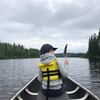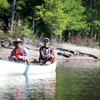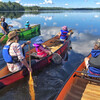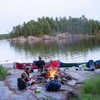
The Ultimate Guide to Canoe Tripping in Woodland Caribou

By the stats alone it’s obvious that Woodland Caribou Provincial Park is one of the world’s finest places to paddle. Imagine a wilderness paradise in Northwestern Ontario spanning 544,160 hectares (over 1.3 million acres) with nearly 2,000 km (1,200 miles) of canoe routes and fewer than 1,000 backcountry visitors per season. Woodland Caribou Provincial Park also offers easy connections to Manitoba’s Atikaki Provincial Wilderness Park, creating opportunities for epic multi-week canoe expeditions for experienced paddlers.
Woodland Caribou Provincial Park is designated part of the massive Pimachiowin Aki World UNESCO Heritage Site, which earned global significance for its pristine waterways and remote and untouched boreal forest. The region remains one of Ontario’s last redoubts for woodland caribou and wolverine. What’s more, it is the traditional and present-day home of Indigenous communities and includes many spiritual sites like ancient pictographs.
Planning a bucket list canoe trip in Woodland Caribou Provincial Park requires considerable planning. This vast area is accessed via the town of Red Lake, a day’s drive on paved highways north of Thunder Bay, Ontario. Woodland Caribou is remote and challenging with limited services. Paddlers must be self-sufficient and experienced in traversing wilderness waters. This article provides you with all you need to plan your own adventure. To start, here are answers to some common questions posed by prospective Woodland Caribou Provincial Park visitors.
How big is Woodland Caribou park?
The original core protected area of Woodland Caribou Provincial Park measures 470,620 hectares, with additions around the periphery creating a total of 544,160 hectares, making it Ontario’s sixth-largest protected area. Woodland Caribou is larger than Minnesota’s Boundary Waters Canoe Area Wilderness, with a mere fraction of the number of visitors. Furthermore, Woodland Caribou is part of a much larger wilderness area spanning the Manitoba border.
Combined with neighbouring Atikaki Wilderness Provincial Park, the protected area for exceptional canoe tripping balloons to one million hectares, significantly larger than Algonquin Provincial Park. If that’s not impressive enough, the entire region has global conservation significance as part of the 2.9-million-hectare Pimachiowin Aki World UNESCO Heritage Site.
Are there caribou in Woodland Caribou Provincial Park?
As its name suggests, Woodland Caribou Provincial Park is one of the best places to glimpse woodland caribou, an Ontario threatened species whose population is limited to the northern portion of the province. The park’s large, undeveloped boreal forest mosaic of lakes and wetlands creates ideal habitat for woodland caribou; these “ghosts of the forest” are secretive, but you may get lucky and see one on a wilderness canoe trip. Besides woodland caribou, researchers are also tracking rare wolverines in this part of Ontario.
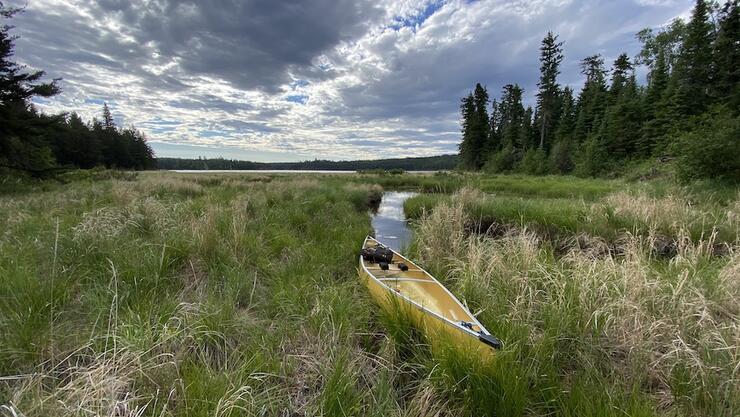
Woodland Caribou Provincial Park fire
Wildfire is an ecologically important reality of the boreal forest. Fires are common in Woodland Caribou Provincial Park, and it’s important to check Ontario’s forest fire information service before embarking on a trip. Campfire bans and travel restrictions may be imposed in especially hot and dry seasons. The vast majority of wildfires in Northwestern Ontario are caused by lightning strikes. Still, it’s a good idea to plan on cooking backcountry meals on a gas stove to reduce the risk of human-caused fires, even when fire bans are not in place.
The most recent Woodland Caribou Provincial Park fire occurred in the summer of 2021, when about 55 percent of the park was burned. Online resources including fire boundary map and burn severity map can give you a sense of the extent of the burn and where it intersects established canoe routes. It’s important to note that while wildfire changes the aesthetics of canoe routes, it doesn’t destroy them. Park maintenance staff are working to survey damage to canoe routes and are actively clearing obstructions to portages and campsites.
Despite the efforts of backcountry rangers, paddlers must still be mindful of hazard trees in campsites and on portages and be prepared to deal with toppled trees and other obstructions. It is a special treat to experience the rapid regrowth of nature, including vibrant plants like purple fireweed, in the wake of a forest fire. Visiting Woodland Caribou Provincial Park will reveal the integral role of fire in the boreal wilderness.

Woodland Caribou Provincial Park weather
Woodland Caribou Provincial Park’s hot and dry climate belies its remote northern location. Daytime high temperatures average around 24 degrees Celsius in July and August with long periods of hot and dry weather common. In fact, Woodland Caribou’s annual precipitation is the second-lowest in Ontario. Intense, short-duration electrical storms are common, especially during hot weather throughout the summer. It’s important to be prepared to take shelter when afternoon clouds start to build. Expect cooler temperatures in September with daytime highs around 16 degrees Celsius. The most common wind directions throughout the paddling season are northwest and west.
How to get to Woodland Caribou Provincial Park
Woodland Caribou Provincial Park is accessed by way of the community of Red Lake, Ontario, located on Highway 105, 567 km northwest of Thunder Bay. Alternatively, the VIA Rail Canadian passenger service crosses Highway 105 about 170 km south of Red Lake. This allows you to access the region from southern Ontario and Winnipeg by rail and a vehicle pickup from a local canoe outfitter.
You can paddle into the park from Red Lake or by arranging a vehicle shuttle to access points on forestry roads, including Lund Lake, Johnson Lake, Onnie Lake and Leano Lake—each offering parking areas and canoe launches. Woodland Caribou Provincial Park fly-in canoe trips are especially popular due to the area’s sheer remoteness. Book a fly-in canoe trip with Goldseekers Canoe Outfitting or Sunset Canoe Outfitting for the ultimate wilderness experience. A Woodland Caribou Provincial Park fly in canoe trip gives you quick access to the park’s immense backcountry and allows for more route options for shorter duration trips.
Woodland Caribou Provincial Park canoe routes
There’s something for just about every wilderness canoe tripper in Woodland Caribou Provincial Park. The park includes lake routes that are popular for anglers, photographers and nature enthusiasts, as well as whitewater canoe tripping on the Bloodvein River. Because of its immensity and remoteness, the average Woodland Caribou Provincial Park canoe trip is a week or longer.
This is no place for inexperienced backcountry travellers; if you have any question about your skills book a trip with a local guide, such as Goldseekers Canoe Outfitting. This long-time local outfitter can also provide route planning and full- or partial outfitting to get you ready for a trip of a lifetime. Here are four sample Woodland Caribou Provincial Park canoe routes that will appeal to all types of wilderness trippers.
Leano Lake Loop
For a simple one-week trip that is easy to plan with road access, drive to Leano Lake, located in the southeastern corner of Woodland Caribou Provincial Park via Long Legged and Mile 51 roads (use a local shuttle to navigate these back roads and store your vehicle while you’re paddling). Leano Lake provides good access to dozens of remote lakes, including Burnt Rock, Mexican Hat, Glen and Wrist. At this point you can add more distance (if time allows) or loop back to your starting point via Aegean Lake. This is an excellent flatwater introduction to Woodland Caribou Provincial Park with relatively short portages and outstanding walleye and northern pike fishing.
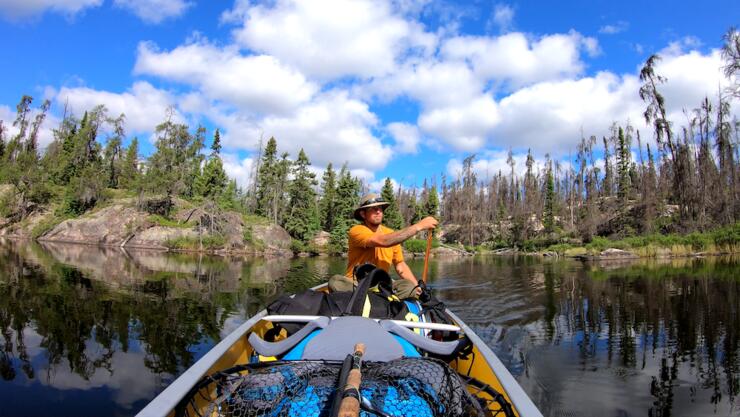
Douglas or Lund to Gammon Loop
Road access to the Woodland Caribou Provincial Park backcountry at Douglas or Lund lakes (both of which are located west of Red Lake on Suffel Lake and Pine Ridge roads, respectively), provides a multitude of options for one- to two-week canoe expeditions. From Douglas Lake you’ll trace small waterways northwest to Indian House Lake and west to Royd and Gammon lakes, before looping back eastwards through Hansen, Optic and Telescope lakes. The launch at Lund Lake provides more immediate access to Indian House Lake.
Options for two-week loop trips include venturing further west into the Woodland Caribou interior or connecting to the lakes west of Leano. Either of these starting points also offer good access to the Gammon and Bloodvein rivers via Carrol Lake and Knox Lake, respectively.
Bloodvein River
For an epic three-week-long adventure access this Canadian Heritage River directly from the town of Red Lake. After crossing Red Lake and exiting at Pipestone Bay you’ll enter Woodland Caribou Provincial Park at Lund Lake, and then traverse Knox and Larus lakes to the Bloodvein headwaters. The Bloodvein includes a mix of novice- to intermediate whitewater and portages, with several scenic cascades and gorgeous campsites. Even though many of the Bloodvein’s rapids are navigable for experienced paddlers, it’s important to remember that its remote location ups the degree of difficulty (and the cost of making a mistake) significantly.
The Bloodvein crosses the Manitoba border and bisects Atikaki WIlderness Provincial Park before emptying into Lake Winnipeg. Shorter trips are possible by starting from the road access point at Lund Lake or flying to Larus or Artery lakes for a 2-week river trip. Charter floatplane flights back to Red Lake are available from the community of Bloodvein, Manitoba, at the river’s mouth.
Upper Bloodvein and Gammon River Circuit
Are you looking for the adventure of a Woodland Caribou Provincial Park fly in canoe trip? This 7- to 10-day journey starts with a flight from Red Lake to Larus Lake on the Bloodvein River. Paddle downstream to Artery Lake and head south, tracing the western boundary of Woodland Caribou Provincial Park along the divide between Ontario and Manitoba.
Then veer east at Carroll Lake on the Gammon River, aiming either east to Donald and Royd lakes or southeast to Bulging Lake. Depending on your timing, either way you can easily make connections back to road access points including Leano Lake or charter a floatplane pickup along the way.
Woodland Caribou Provincial Park outfitters
Goldseekers Canoe Outfitting and Wilderness Expeditions
This outfitter is located on the doorstep of Woodland Caribou Provincial Park in Red Lake, Ontario. Goldseekers Canoe Outfitting offers full- and partial outfitting, including canoe and equipment rentals, route planning advice, shuttles, and guided trips. Goldseekers also maintains the Paddle Inn B&B.
Sunset Canoe Outfitting
Based in Ear Falls, Ontario, on Highway 105, on the way to Red Lake, Sunset Canoe Outfitting offers canoe rentals, route planning, vehicle shuttles, and can assist with organizing a Woodland Caribou Provincial Park fly in canoe trip.
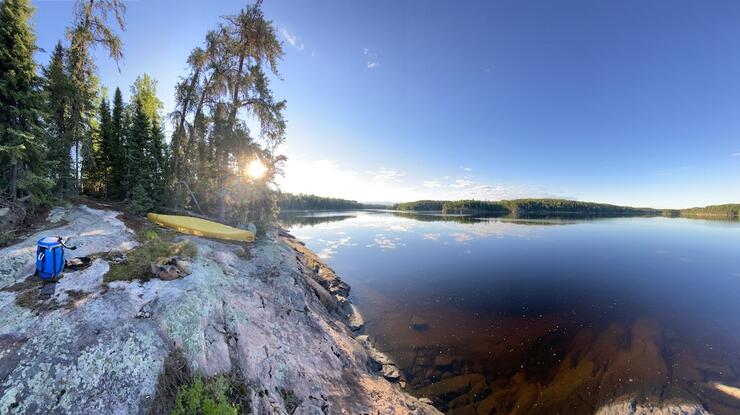
Shuttles
The same primary Woodland Caribou Provincial Park outfitters above are your best bets for coordinating vehicle, boat and air shuttles for your canoe trip. You can also contact air charter companies directly and access the general area aboard VIA Rail’s Canadian passenger train.
Goldseekers Canoe Outfitting and Wilderness Expeditions
Goldseekers is your best choice for drop-offs and pickups at Woodland Caribou Provincial Park’s four road access points. The Red Lake-based outfitter can securely store your vehicle for the duration of the trip and is also available to assist with booking air- and boat charters for Woodland Caribou trips.
Sunset Canoe Outfitting
Sunset Canoe Outfitting offers vehicle shuttles for canoe trips all along the Highway 105 corridor and Woodland Caribou Provincial Park. They’re a great choice if you’re looking to take the VIA Rail passenger train service to the Highway 105 crossing, where you can arrange a vehicle shuttle to Red Lake and Woodland Caribou. Sunset Canoe Outfitting also works with Superior Airways to arrange Woodland Caribou Provincial Park fly in canoe trips.
Superior Airways
Located in Red Lake, Ontario, Superior Airways flies DeHavilland Beaver and Otter floatplanes to support the Woodland Caribou Provincial Park fly in canoe trip of your dreams.
Viking Outposts
Viking Outposts offers fly-in services from Red Lake for paddlers to destinations across Woodland Caribou Provincial Park as well as popular river routes like the Bloodvein River.
VIA Rail
VIA Rail provides access to Highway 105 from Winnipeg, southern Ontario and points across Canada aboard the Canadian passenger service.
Guided trips
The majority of guided canoe trips in Woodland Caribou Provincial Park focus on the renowned waters of the Bloodvein River, a Canadian Heritage waterway. However, custom guided lake-to-lake canoe trips are available for flatwater paddlers through Goldseekers Outfitting. Here’s a complete list of canoe guides operating in the region.
Goldseekers Canoe Outfitting and Wilderness Expeditions
Based in Red Lake, Goldseekers is your best bet for arranging a custom guided canoe trip to your specifications on the rivers and lakes of Woodland Caribou Provincial Park. Theme-based trip options include wildlife photography and fishing, as well as river expeditions on the Bloodvein, Berens and other waterways.
MHO Adventures
MHO Adventures is a southern Ontario-based canoe guide offering all-inclusive trips on wild rivers across the province, including a 13-day Bloodvein River canoe trip starting with a fly-in to Artery Lake, on the western edge of Woodland Caribou Provincial Park.
Black Feather Wilderness Adventures
Black Feather’s 2-week Bloodvein River guided whitewater canoe trip starts with a flight from Red Lake and finishes at Lake Winnipeg. The company handles the logistics, provides all the equipment, gourmet meals and whitewater instruction on the river.
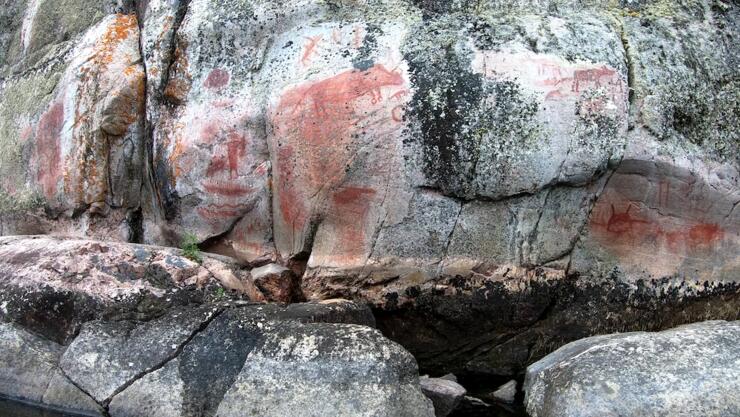
Woodland Caribou Provincial Park permits
You’ll need backcountry camping permits to travel in Woodland Caribou Provincial Park. Reservations are not available, but you can purchase your interior camping permits online up to two weeks before your departure date. Unlike most other Ontario Parks you simply pay a general daily camping fee for the duration of your trip rather than booking sites on specific bodies of water.
Permits are also available at the Woodland Caribou Provincial Park office during business hours at 227 Howey Street in Red Lake, Ontario. You can also use the self-serve kiosk located outside the Woodland Caribou Provincial Park office during non-business hours or purchase your camping permits from an outfitter. The maximum group size is 9 people per campsite in Woodland Caribou Provincial Park.
Woodland Caribou Provincial Park is a wilderness area and campsites and portage trails are marked discreetly: don’t expect to find the bright orange and yellow signs used in most other Ontario Parks. Portages and backcountry campsites are cleared on a four-year rotation by backcountry rangers, however maintenance work often falls behind due to devastating wildfires.
Park rules state that you must camp on official park campsites; clearing obstructions along portage trails is allowed, but you are not permitted to cut your own trails. It’s important to recognize that the landscape of Woodland Caribou Provincial Park is constantly changing due to fire, and you may have to work around fallen and charred trees in campsites and on portage trails. Hammock camping may not be possible due to wildfire damage on some campsites.
Leave No Trace principles apply in Woodland Caribou Provincial Park. Due to frequent dry weather conditions you are advised to bring a gas stove for cooking and be modest and careful with campfires, and adhere to fire ban regulations. Woodland Caribou Provincial Park enforces a ban on glass bottles in the backcountry (cans are allowed). You are not permitted to construct any structures, including improvised “campsite furniture” like tables and benches.
Live vegetation and standing dead trees are protected for habitat and aesthetic values; use fallen deadwood for campfires. It is illegal to remove natural objects from Woodland Caribou Provincial Park, including driftwood, stones, feathers, and antlers. Take pictures and leave these treasures for others to discover. Similarly, cultural sites and artifacts in the park are strictly protected; report your observations to park staff to add to the regional inventory of important cultural locations.
Woodland Caribou Provincial Park fishing
Fishing opportunities in Woodland Caribou Provincial Park are abundant. Depending on the lake or waterway, you’ll catch walleye, northern pike and lake trout. Walleye fishing is outstanding from late May onward; simply jigging twister tails above rocky shoals in shallower lakes like Mexican Hat is the best way to catch all the walleye you’ll need for a fish dinner. Meanwhile, northern pike are ravenous for spoons and minnow baits (and, let’s be honest—pretty much any artificial lure) in the rapids of the Gammon and Bloodvein rivers, with trophy-size catches available in calm weed beds.
Lake trout are more secretive, holed up in the deepest lakes as temperatures warm in the summer months. You need to be strategic to catch them in places like Constellation Lake, with spoons working well earlier in the season and tube jigs providing good success in deeper water as the season progresses.
Ontario fishing regulations apply in Woodland Caribou Provincial Park. Whether you’re a Canadian resident or a visitor from outside the country, you’ll need a valid Ontario fishing licence.
Woodland Caribou Provincial Park maps
You have several options for Woodland Caribou maps. For general trip planning, start with Ontario Parks’ digital map of the area, which shows access points and canoe routes but lacks the detail for navigating on the water. The park also offers an online campsite inventory map that helps with planning daily distances. For travelling in the park, Chrismar produces the official Woodland Caribou Provincial Park map, which features portages and campsite information at a reasonable scale of 1:110,000—usually just enough detail for getting around in the backcountry. For more resolution, you can supplement the park map with individual topographical maps (1:50,000) to cover your planned route.
Plan Your Dream Trip Now
Whether you are an expert backcountry canoe tripper planning the wilderness journey of a lifetime, or a less experienced canoe camper looking to join a fully guided exploration of Woodland Caribou, this incredible wilderness park is a destination like no other. Start with the outfitters, maps and resources in this article, and begin planning your dream trip now.
Recommended Articles

Killarney Canoe Trips
Ontario’s Moose Hotspots

Temagami Canoe Trip Guide
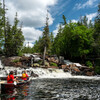
Canoe Trips in Lady Evelyn-Smoothwater

Best Places To Canoe Trip

Easy River Tripping
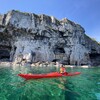
Ontario’s Blue-Water Lakes
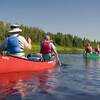
Missinaibi River Canoe Trip
Temagami Canoe Trip Routes
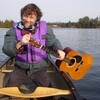
Songs About Canoeing
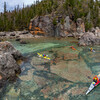
Explore the Slate Islands
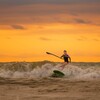
Surf SUP!
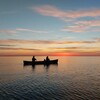
Lake Superior Park’s Prettiest Lakes
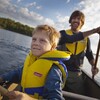
Paddling Laws
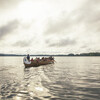
11 Indigenous-Owned Outdoor Adventure Companies in Ontario
Train-In Adventure
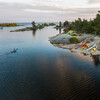
Best Kayaking on Georgian Bay
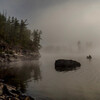
Paddling with ghosts
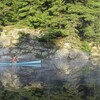
Discover Point Grondine
